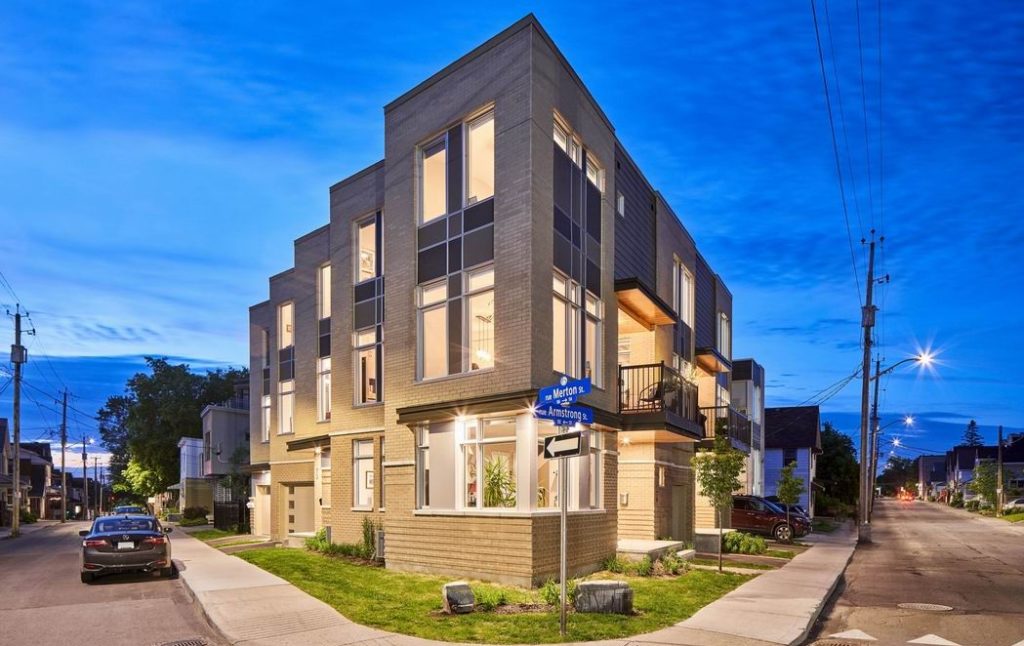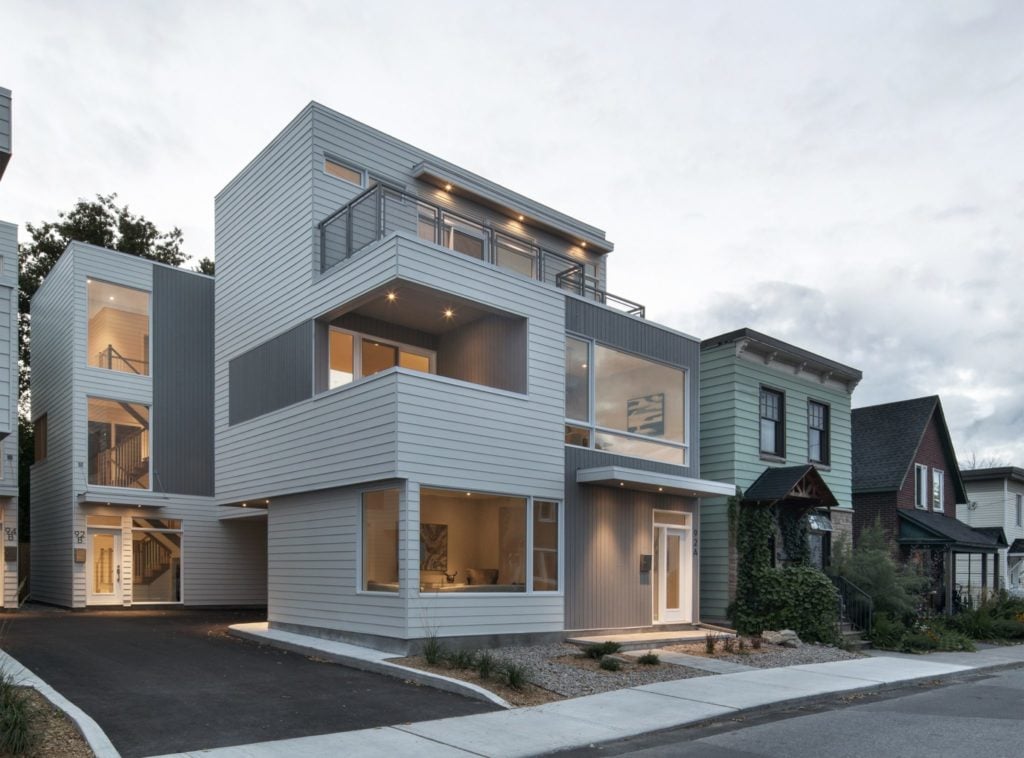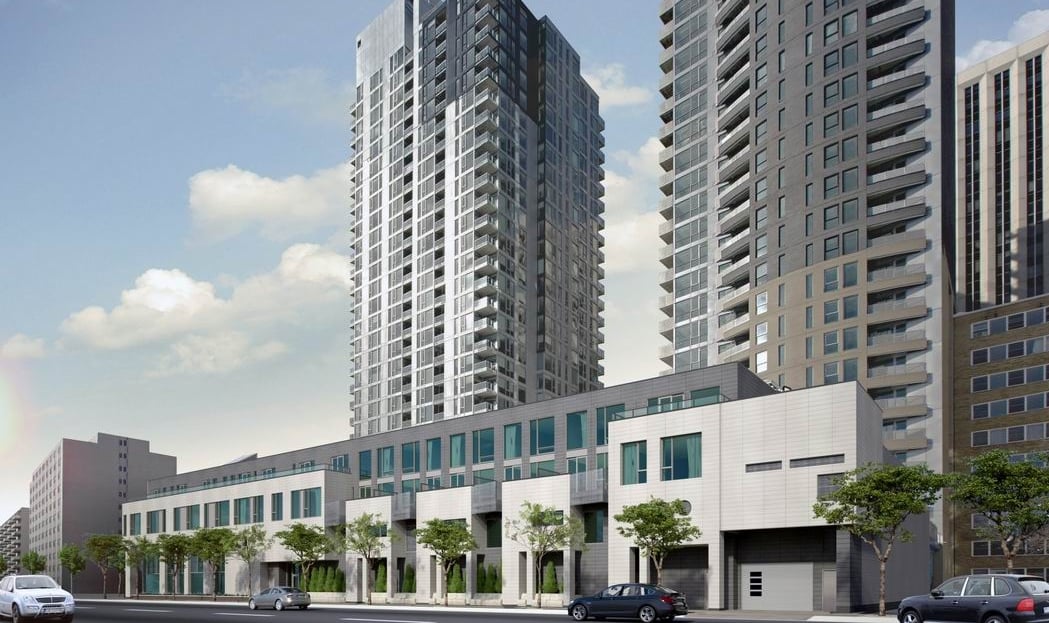Here’s the problem I’m having with the current discussion around Ottawa’s Official Plan, the urban boundary and intensification: nobody’s talking about what intensification is actually going to look like.
The Official Plan provides a guide for future development in Ottawa, and articulates a vision of the city in the future. An upcoming report that’s expected to be reviewed at a joint meeting of the planning and agriculture and rural affairs committees on May 11 will look out to 2046 and, in the realm of housing, it’ll consider where new homes for our growing city can go, what types of homes will be available, and how dense neighbourhoods will be.
The debate among stakeholders and interested citizens centres largely around the intensification rate, meaning the number of homes that should be added to current neighbourhoods, as opposed to building new communities.
The numbers being discussed range from 50 to 70 per cent of all new homes being accommodated in existing neighbourhoods. But how does that translate into actual physical buildings?
In order to accommodate the 400,000 new people we’re expecting between now and 2046, the city says we’ll need 195,000 new homes.
If 70 per cent intensification ends up being the target — as some have been calling for — then that means at least 136,500 new homes need to go into existing neighbourhoods.
So, what is it that we’re prepared to accept in order to intensify our neighbourhoods to that degree?
Every ward — all 23 of them — could choose:
- one 25-storey tower every year for 25 years;
- two 12-storey towers every year for 25 years; or
- 20 four-storey blocks, again, every year for 25 years.

These scenarios are somewhat glib but not inaccurate — I use them to illustrate that the actual number of new homes that would have to be built in existing neighbourhoods is a lot higher than most who are engaged in this discussion are conceiving, and that the types of homes these would have to be would be extremely limited — mostly multi-family, which have had difficulty being accepted by communities up to this point.
Every community is going to get denser. If you think your community has already taken on its fair share of intensification, you’re in for a shock because the pressure to intensify isn’t going to go away — it’s only going to get worse.
And the city is going to have to push through massive zoning changes in order for an intensification target of 70 per cent to have any chance of becoming reality:
- Infill projects that have been rejected in the past — because they were too tall, they were too many units or they didn’t fit the neighbourhood’s character — will likely become as-of-right development moving forward (meaning they will legally be allowed).
Often non-conformity with current zoning is used to object to proposed projects but that argument will no longer be available because the zoning will expand to allow bigger buildings, more density and multiple uses. - Eventually towers proposed on and around LRT stations will be built out, and four- to nine-storey buildings are going to have to start snuggling up to single detached family homes.
- Major and minor arterial roads, and some collectors, will likely be the focus of intensification, no matter what their current zoning is.
As part of the work on the Official Plan we are supposed to get mapping that specifically outlines where city staff expect intensification to be focused in every community throughout the city, but this isn’t coming until October.
I am gravely concerned that a lot of residents — ones who have been part of the conversation up to this point but especially the ones who haven’t — are going to be extremely upset when a 70-per-cent intensification rate gets starkly translated to a map of their neighbourhood.
The intricacies of the Official Plan and Ottawa’s residential growth plan are not top of mind for most citizens at the best of times, let alone in the current crisis we find ourselves. Infill developments don’t typically catch anyone’s attention unless they are in their neighbourhood — and this plan will mean development in everybody’s neighbourhood.

I don’t believe that five years from now residents will be satisfied to be told that they had their opportunity to weigh in on the level of intensification in their neighbourhood back in the spring of 2020.
From the numerous discussions, panels and meetings on this subject that I’ve been a part of for a year now, it’s clear that while most residents appreciate there needs to be more intensification, there is only a certain amount of growth they are willing to accommodate.
We are in a very awkward position of being asked to choose an overall intensification target now, without knowing where that intensification will go or even if there’s a reasonable chance it is achievable.
We already have communities that are actively pushing back on more intensification, like the Stop Over-Intensification Westboro campaign with their red signs. What’s going to happen if the Official Plan demands that they take it?
This is not an either/or proposition between intensification and expansion of the urban boundary. We at the Greater Ottawa Home Builders’ Association have been very clear in saying we need both an increase in intensification and a boundary expansion in order to accommodate Ottawa’s population growth.
The intensification target should be a tool in the new Official Plan to help provide us with the kinds of neighbourhoods we want. But it’ll be useless unless we can ensure the proposed level of intensification can be absorbed in existing neighbourhoods in a way that’s acceptable to residents.
It would be best if everyone understood the profound changes Ottawa is going to see as it grows to a population of 1.4 million in order to give the city its best chance to achieve its housing intensification targets.






